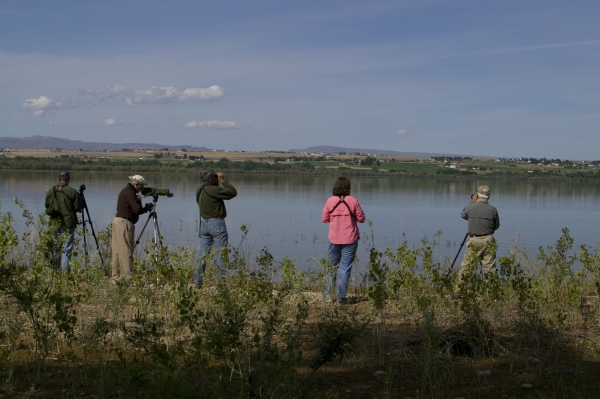
With over 250 bird species and 30 mammal species on the refuge, the patient observer or photographer has many excellent wildlife-viewing opportunities. To maximize your chance of seeing wildlife, plan when to visit, where to go, and how to see wildlife.
When to Visit
The refuge is open all year from dawn to dusk. The refuge visitor center is open weekdays from 8:00 A.M. to 4:00 P.M., except on Federal holidays. Wildlife is generally most active in the mornings and early evenings. Each season brings different wildlife-viewing opportunities. The best season for viewing a wide variety of wildlife is from September through December.
Where to Go
Visitor Center
View a variety of upland, riparian riparian
Definition of riparian habitat or riparian areas.
Learn more about riparian , and lake wildlife from the Visitor Center observation room. Osprey often nest on a nearby nest platform and can be seen from the observation room. Can't make it to the refuge, watch the osprey nest from home on the Friends of Deer Flat's Osprey Nestcam
Trails
Our 10+ miles of hiking trails provide great opportunities for wildlife watching.
Driving Tours
For a driving tour, take the 29.5-mile Lake Lowell Unit Bird Tour or the 47-mile Snake River Islands Unit Bird Tour. Both tours start and end at the east end of the Upper Dam. You can get more information at the visitor center.
For information about other places to watch wildlife in Idaho, find out about the Idaho Birding Trail.
Wildlife Viewing Tips
- Wildlife is generally most active in the morning or the evening.
- There is a wildlife sighting board outside the visitor center.
Before you visit, check iNaturalist and eBird for recent sightings to see what other guests have seen.
If driving, stay in your car. It makes an excellent viewing blind.
- If walking, move slowly and quietly to avoid scaring wildlife.
- Stay on maintained trails and do not approach wildlife too closely.
- Use binoculars or a spotting scope to view animals “up close” without disturbing them. Binoculars are available to borrow at the visitor center during open hours; they just need to be returned by the close of business.
- Sit quietly and wait patiently. Although wildlife may disappear when you arrive, if you are quiet and still they will often return shortly.
- Bring a field guide to help you identify the species you see. Consult the refuge bird list, mammal list, and other wildlife lists to find out what to expect.
- Look for signs that wildlife has been there before you. You might see tracks, scat (animal poop!) or chewed leaves or branches.
- Leave pets at home. Pets will scare wildlife before you get a chance to see it.


